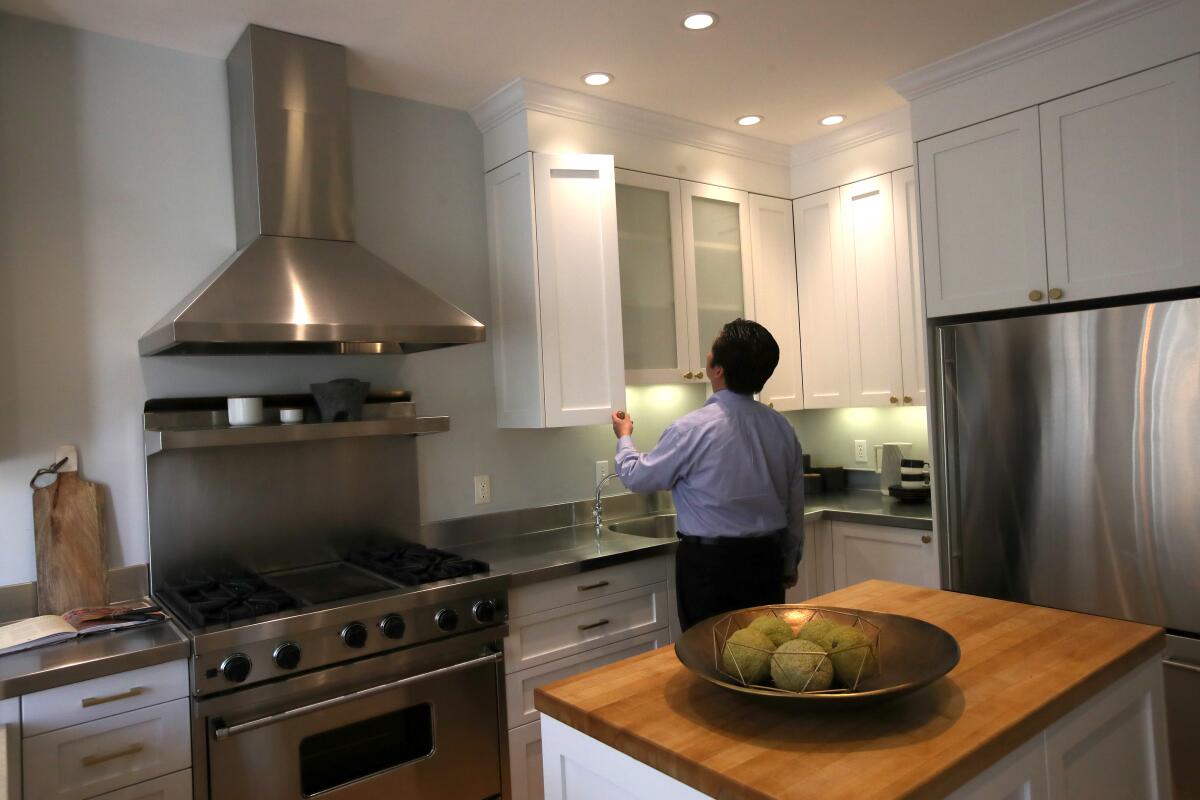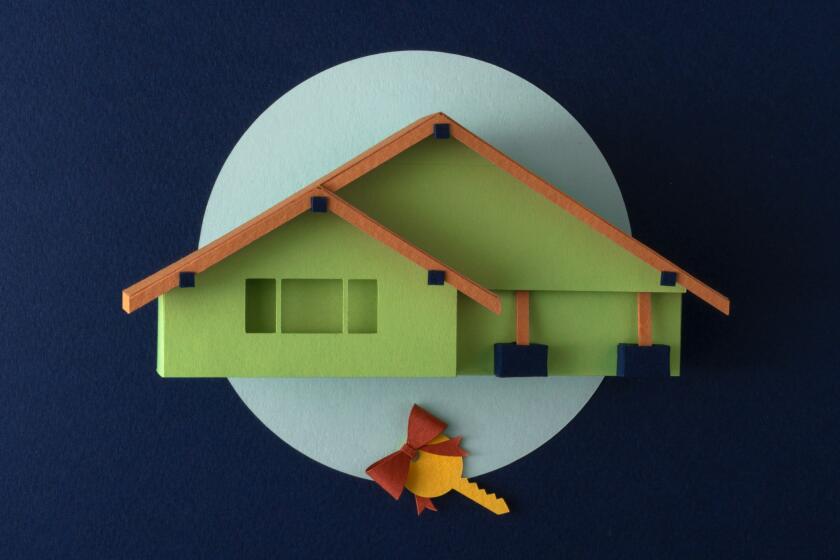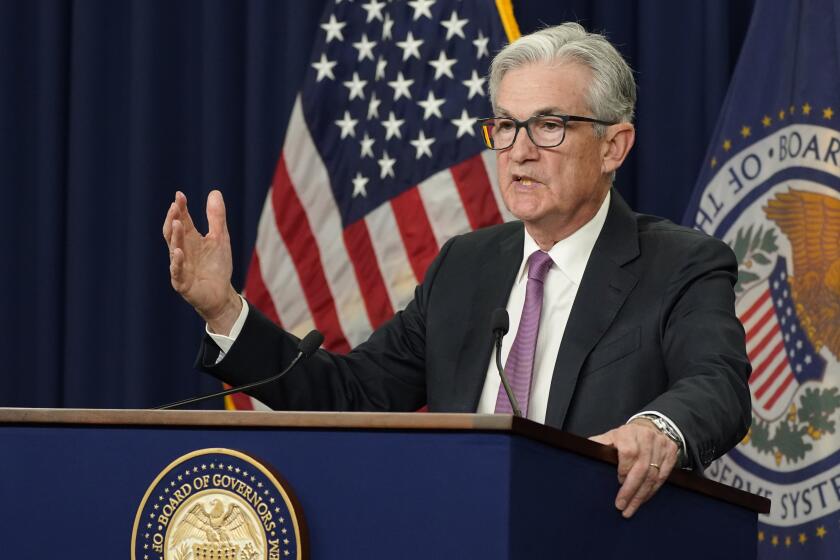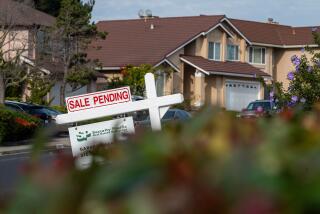Rising mortgage rates are sending home prices lower

- Share via
For the first time in a decade, home prices in Southern California are definitively falling.
After 10 years of largely uninterrupted gains, home values have turned negative, the result of rising mortgage rates that have squashed demand and caused sales to plummet.
The typical Southern California home price is now nearly 6% below the all-time high reached in May, according to data released Wednesday by Zillow.
In September, the typical home price for the six-county region dropped 0.6% from August to $817,316, marking the fourth consecutive month that prices declined from the prior month. That hasn’t happened since early 2012.
“This is a turning point,” said Nicole Bachaud, an economist with Zillow.
Other measures of home prices, including data from mortgage services firm Black Knight and John Burns Real Estate Consulting, show similar or even greater declines from peak prices, providing further evidence the recorded drops aren’t a data anomaly.
A no-BS guide to buying your first home in Southern California.
Few, if any, major real estate experts predict Southern California home prices will fall like they did during the Great Recession. But values are coming down in many corners of the country, because they have to, according to economists.
For much of the pandemic, mortgage rates below 3% enabled buyers to bid up housing to new heights. But inflation and the Federal Reserve’s actions to fight it have helped push rates up sharply and drastically reduced what people can afford.
As of last week, the average rate on a 30-year fixed-rate mortgage was 6.66%, according to mortgage buyer Freddie Mac, more than double what it was a year earlier.
The increase adds nearly $1,500 to the monthly mortgage payment on an $817,316 house.
For many buyers that’s too much.
Christine and Morgan Blackledge decided to keep renting when they saw their options dwindle from well-kept two-bedroom condos to tiny one-bedroom units or fixer-uppers in the Los Angeles County and Ventura County neighborhoods where they considered living.
“It just became not worth it,” Christine Blackledge said. “We are both in our 50s and we are kind of past the starter home thing.”
This summer, they took their down payment money and opened a private practice where Morgan, a therapist, handles the patients and Christine handles the books.
As Southern California real estate gets more expensive, some buyers are changing their definition of a starter home.
For Santa Monica renters Elizabeth Badger and her husband it was a similar story when they tried to get into a condo in the pricey city with enough space for their two children and a dog.
“With the rise in interest rates, the monthly payment just well outpaced our ability,” said Badger, 37, who manages education software for school districts.
Eventually, price declines could help people like Badger buy a home.
But so far rising mortgage rates mean monthly payments for today’s lower-cost homes are still higher than the monthly payment if you purchased a house at the peak, according to a Zillow analysis of Southern California counties that assumed 20% down payments.
In individual counties, price declines from the peak range from a 3.6% drop in Ventura County to a 6.7% decrease in Los Angeles County, according to Zillow.
Given the strong demand earlier this year, Zillow data show prices are still higher than a year earlier in all Southern California counties. But a growing number of real estate analysts expect prices to keep falling through at least 2023.
According to one measure from John Burns Real Estate Consulting, prices in L.A. County are already down 3% from September 2021.
Rick Palacios Jr., research director with the consulting firm, said one reason for greater drops in L.A. County could be the sagging stock market has hammered luxury sales in the more rarefied realms of the region, as people saw the money they planned to use for their down payments disappear.
“Anybody looking at their investment portfolio lately probably has to have a drink to sit down and look at it,” he said.
Palacios said that some areas in the country that saw minimal price declines during the Great Recession might see prices fall further this time around. But in hard-hit places such as Southern California, he and other experts said such declines are unlikely.
In large part, that’s because economists predict any upcoming recession will be more mild than in 2008. In the case of a recession, experts say, tighter lending standards during this latest housing boom should limit the number of foreclosures. It was a wave of such forced selling that tanked Southern California home values last time, sending them down 41%, according to Zillow’s measure.
At the moment, many homeowners are deciding not to list their homes, because they don’t want to sell for less than their neighbors did, or give up their rock-bottom fixed-rate mortgage.
That “seller strike” is limiting the number of homes on the market and preventing home prices from falling further, expert say.
Ultimately, just how far prices drop depends on where interest rates settle, said Richard Green, director of the USC Lusk Center for Real Estate.
“The further they go up, the more house prices will go down,” Green said.
Mortgage interest rates have climbed steadily for the last six weeks, despite the unwavering message from the Fed about its plans. Evidently, markets are starting to take that message seriously.
With rates climbing toward 7%, some experts are updating their forecasts.
Palacios said that when rates were at 5%, his firm expected price declines in Southern California of about 10%, peak to trough, but now the expected decline has roughly doubled.
Although that’s not Great Recession level, “it’s nothing to sneeze at,” he said. “These will probably be the most significant price declines seen outside from maybe a couple other instances in history.”
More to Read
Sign up for Essential California
The most important California stories and recommendations in your inbox every morning.
You may occasionally receive promotional content from the Los Angeles Times.













